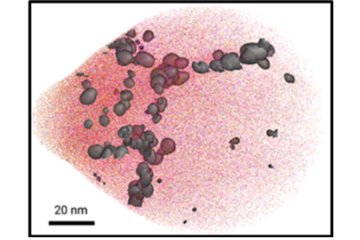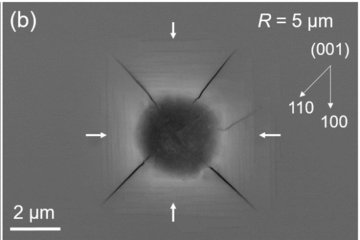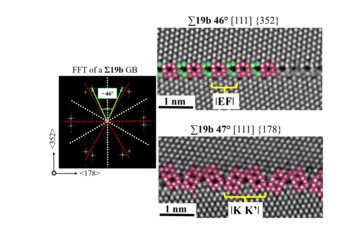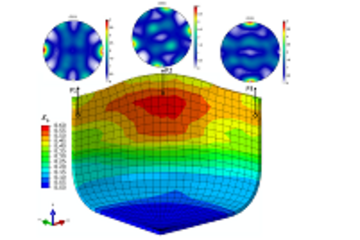All genres
281.
Talk
Joint Multiscale simulation and experimental analysis of stress and strain partitioning in dual phase steel. MRS Fall Meeting , Boston, MA, USA (2014)
282.
Talk
Experimental and simulation analysis of dual phase steel micromechanics. Seminar at Departments of Engineering and Materials, Oxford University, Oxford, UK (2014)
283.
Talk
High-strength steels with improved ductility - potentials for lightweight engineering. Jahrestagung STAHL 2014 – Annual Conference of the German Iron Steel Institute, Düsseldorf, Germany (2014)
284.
Talk
The flexible crystal plasticity framework "DAMASK". Jung-DGM Rhein-Ruhr Meeting, Bochum, Germany (2014)
285.
Talk
Ductile damage: Micro-mechanisms, macro-influences. The 4th International Symposium on Steel Science - ISSS 2014, Kyoto, Japan (2014)
286.
Talk
Atomistic study of dislocation mobility and obstacle hardening in bcc-Fe: versatility of embedded atom method potentials. MMM2014, 7th International Conference on Multiscale Materials Modeling
, Berkeley, CA, USA (2014)
287.
Talk
Mesoscale modeling of dislocation mechanisms and the effect of nano-sized carbide morphology on the strengthening of advanced lightweight high-Mn steels. MMM2014, 7th International Conference on Multiscale Materials Modeling
, Berkeley, CA, USA (2014)
288.
Talk
Simulation analysis of stress and strain partitioning in dual phase steel based on real microstructures. MMM2014, 7th International Conference on Multiscale
Materials Modeling
, Berkeley, CA, USA (2014)
289.
Talk
Identification of constitutive parameters by inverse simulation of indentation in single crystals and close to grain boundaries. MMM2014, 7th International Conference on Multiscale
Materials Modeling
, Berkeley, CA, USA (2014)
290.
Talk
Tailoring the Mechanical Properties of a Twinning-Induced Plasticity Steel by Retention of Deformation Twins During Heat Treatment. MSE 2014
, Darmstadt, Germany (2014)
291.
Talk
Crystal Plasticity Investigation of the Deformation Behavior of Single Crystalline Irregular Honeycombs. MSE 2014, Darmstadt, Germany (2014)
292.
Talk
Crystal Plasticity Implementation of an Advanced Constitutive Model Including Twinning for High Manganese Steels. MSE 2014
, Darmstadt, Germany (2014)
293.
Talk
Integrated Experimental-Numerical Methodology for Stress-Strain Mapping Down to Nanoscale. MSE 2014
, Darmstadt, Germany (2014)
294.
Talk
Tailoring the Mechanical Properties of a Twinning-Induced Plasticity Steel by Retention of Deformation Twins During Heat Treatment. 2nd International Conference High Manganese Steel, HMnS 2014
, Aachen, Germany (2014)
295.
Talk
Robust spectral-based numerical methods for heterogeneous microstructures. 4th International Symposium on Computational Mechanics of Polycrystals, CMCn2014, Düsseldorf, Germany (2014)
296.
Talk
Robust spectral-based numerical methods for heterogeneous microstructures. 24th International Workshop on Computational Micromechanics of Materials, IWCMM24, Madrid, Spain (2014)
297.
Talk
Modelling plasticity in forming processes. 1st International Workshop on Software Solutions for Integrated Computational Materials Engineering (ICME)
, Aachen/Rolduc, The Netherlands (2014)
298.
Talk
Modelling of dislocation propagation during creep of single crystal Ni-base superalloys. Eurosuperalloys 2014, Giens, France (2014)
299.
Talk
Integrated experimental and simulation analysis of stress and strain partitioning in dual phase steel. IUTAM Symposium on Connecting Multiscale Mechanics to Complex Material Design, Evanston, IL, USA (2014)
300.
Talk
Synthetic dental composite materials inspired by the hierarchical organization of shark tooth enameloid. Third winter school within the DFG priority programme 1420 "Biomimetic Materials Research: Functionality by Hierarchical Structuring of Materials", Potsdam, Germany (2014)











